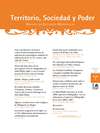Resumen
Resumen: Este trabajo describe la evolución histórica de un microespacio situado en el oeste de la ciudad de Oviedo: el actual área del El Cristo. La presencia romana en este espacio está constatada por diversos hallazgos arqueológicos, entre los que destacan los ya desaparecidos yacimientos de Monte Alto y de Las Murias de Paraxuga. La existencia de materiales romanos está constatada también en los entornos cercanos al espacio que nos ocupa: el casco antiguo ovetense, la parroquia de Naranco y las cercanas localidades de Villarmosén y San Pedro de Arcos. Los hallazgos cerámicos de Paraxuga sugieren que el establecimiento habría estado ocupado en el periodo de transición de la Antigüedad al Altomedievo, si bien se desconocen las características de dicha ocupación. El espacio objeto de estudio presenta nuevos datos para los siglos X y XI, momento en el que aparecen dos núcleos de corte aldeano claramente establecidos que se sitúan en el antiguo fundum del establecimiento romano: Olivares y Aspra.
Palabras clave: Antigüedad, Altomedievo, establecimiento agropecuario, aldea, poblamiento, sociedad.
Abstract: This paper describes the historical development of a microspace located in the west of the city of Oviedo (Asturias, Spain), the current area of El Cristo. The presence of Rome in this area is proven by various archaeological findings, such as those already missing sites of Monte Alto and Las Murias de Paraxuga. In the same way, Roman materials have been found in environments near the area that concern us: the old quarter of the city of Oviedo, the parish of Naranco and the nearby places of Villarmosén and San Pedro de Arcos. The pottery found in Paraxuga suggests that this settlement would have been occupied in the transition period from Antiquity to Early Middle Ages, although we don’t know the nature of that occupation. The space analyzed presents new data for the tenth and eleventh centuries, when two villages clearly established appear in the ancient fundum of Paraxuga: Olivares and Aspra. The place name of Olivares refers to a place rich in olive trees, which may could involve at some time the production of oil. In any of the documental references appears this type of tree, so their cultivation had to be earlier than the time recorded by the documents. The centre of Olivares is currently situated 500 meters away from the site of the former settlement of Paraxuga. We also know that during the thirteenth century the space in which stood the Roman site was included within the boundaries of Olivares, configuring a complex agrarian structure or openfield. Therefore, Olivares was situated inside the limits of the old site of Paraxuga, probably as a location for the cultivation of olive trees. The pottery founded in Paraxuga date back to fourth-sixth centuries, although the ruins have a more complex interpretation. With data handled, we consider the possibility that Paraxuga had been fortified during the Late Antiquity, as it happened with the Roman site of Murias de Beloño in Gijón. The early medieval pottery could be interpreted in different ways; maybe the site had some type of occupation but with other meaning. The only thing we can confidently assert is that during the transition period from Antiquity to Early Middle Ages took place the installation of two villages, Olivares and Aspra. In the case of Aspra we consider that this village emerged as a development of alveolar settlement from Olivares. Although Olivares does not appear in the documentary evidence until the eleventh century, its location closer to the Roman remains and its situation in a place of the Paraxuga fundum given over to the cultivation of olive trees may be given a earlier chronology for this village. On the other hand, the fate of some of the Roman settlements also refers to the existence of local elites who continued acting after the breakdown of the Roman Imperial system. So some settlements continued acting as centres of power in the Early Middle Ages, though there was been changes in their morphology and function. The site of Paraxuga could continue acting as topography of power during the centuries of transition from Antiquity to the Middle Ages, gradually losing weight in favour of other nearby sites that acquire a progressive significance. In this sense, is important to emphasize the situation of Paraxuga between the aristocratic settlement of Lillo and the city of Oviedo.
Keywords: Antiquity, Early Middle Ages, villa, village, settlement, society.

